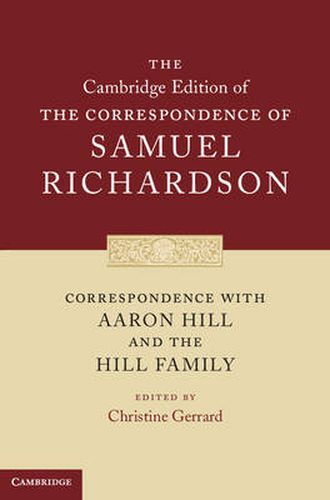Readings Newsletter
Become a Readings Member to make your shopping experience even easier.
Sign in or sign up for free!
You’re not far away from qualifying for FREE standard shipping within Australia
You’ve qualified for FREE standard shipping within Australia
The cart is loading…






Samuel Richardson (1689-1761) was an established master printer when, at the age of 51, he published his first novel, Pamela, and immediately became one of the most influential and admired writers of his time. Not only were all Richardson’s novels written in epistolary form: he was also a prolific letter-writer himself. This volume in the first ever full edition of Richardson’s correspondence includes his letters to and from Aaron Hill, the poet, dramatist and entrepreneur (1685-1750). Hill was Richardson’s earliest literary friend and advisor as he embarked on a new career as a novelist. This correspondence offers fascinating insight into the compositional processes not just of the two Pamela novels, but of Richardson’s later novels Clarissa and The History of Sir Charles Grandison. The volume also contains Richardson’s correspondence with Hill’s three literary daughters, which forms an invaluable chapter in the history of women’s writing and literary criticism.
$9.00 standard shipping within Australia
FREE standard shipping within Australia for orders over $100.00
Express & International shipping calculated at checkout
Samuel Richardson (1689-1761) was an established master printer when, at the age of 51, he published his first novel, Pamela, and immediately became one of the most influential and admired writers of his time. Not only were all Richardson’s novels written in epistolary form: he was also a prolific letter-writer himself. This volume in the first ever full edition of Richardson’s correspondence includes his letters to and from Aaron Hill, the poet, dramatist and entrepreneur (1685-1750). Hill was Richardson’s earliest literary friend and advisor as he embarked on a new career as a novelist. This correspondence offers fascinating insight into the compositional processes not just of the two Pamela novels, but of Richardson’s later novels Clarissa and The History of Sir Charles Grandison. The volume also contains Richardson’s correspondence with Hill’s three literary daughters, which forms an invaluable chapter in the history of women’s writing and literary criticism.